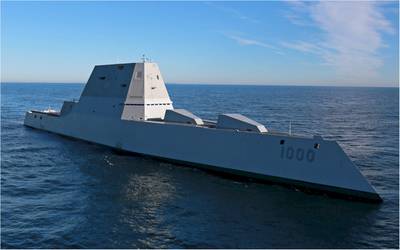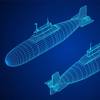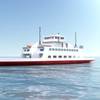The U.S. Navy recently launched USS Zumwalt (DDG-1000), lead ship of the all-new Zumwalt-class of stealth destroyers. Named for Admiral Elmo R. “Bud” Zumwalt, this new vessel was developed under the US Navy’s DD-21 “21st Century Destroyer” program.
Having been selected as the primary navigation and GMDSS emergency communications provider for the USS Zumwalt, Furuno has provided a range of equipment for the vessel, as well as training and support throughout the entire installation and commissioning process, with the system meeting all the high expectations of Bath Iron Works and the U.S. Navy.
The USS Zumwalt is equipped with an electronic navigation package that includes two Furuno X-Band and two S-Band FAR2xx7 Radar systems (four navigational Radars total) along with a complete RC1815 GMDSS communications package. Both X- and S-Band Radar systems are installed fore and aft of the deckhouse. Each system combines into a single display presentation, allowing the fore and aft X-Band Radars to provide a cohesive X-Band picture on a single display. The same is true for the two S-Band Radars.
Other Furuno equipment onboard includes the FA150 AIS, GS100 Satellite Speed Log, and NX700P Navtex systems, all installed by Bath Iron Works, a part of General Dynamics Marine Systems. Operating out of Bath, Maine, they are a full service shipyard specializing in the design, construction and support of complex surface combatants for the U.S. Navy.
The USS Zumwalt is expected to carry a complement of 80 Tomahawk long-range, subsonic cruise missiles, designed to attack a variety of surface targets. While the ship has no current expectation for ballistic missile defense, the USS Zumwalt is currently capable of launching the SM-2 surface-to-air (SAM) missiles, which can be dual-purposed to attack enemy ships, both at line-of-sight range as well as over the horizon, using inertial guidance and terminal infrared homing.
Future adaptation of the weapons systems include plans for a railgun, as its turbines are capable of producing up to 78 megawatts of power - sufficient to power the impressive electromagnetic weapon.











